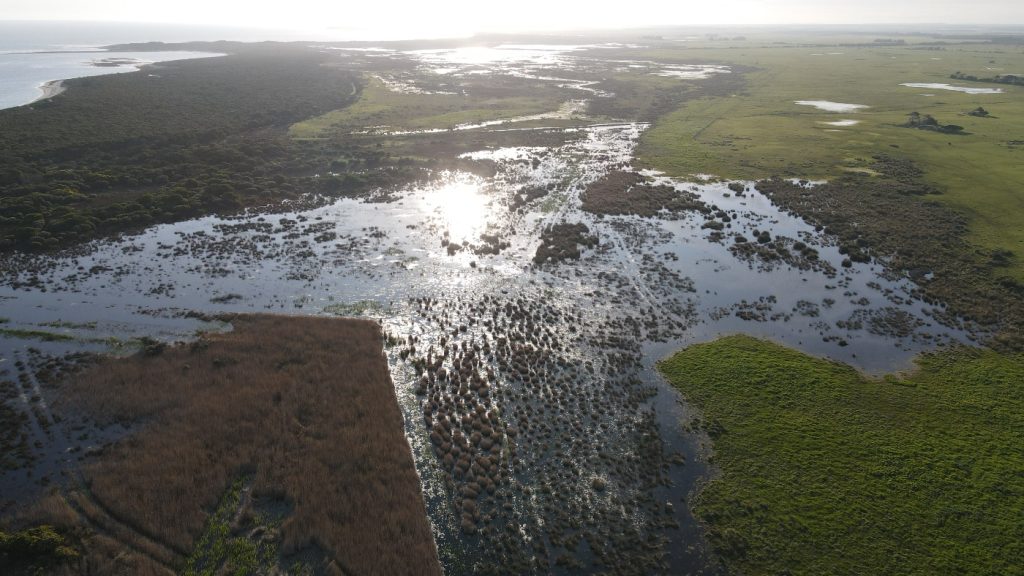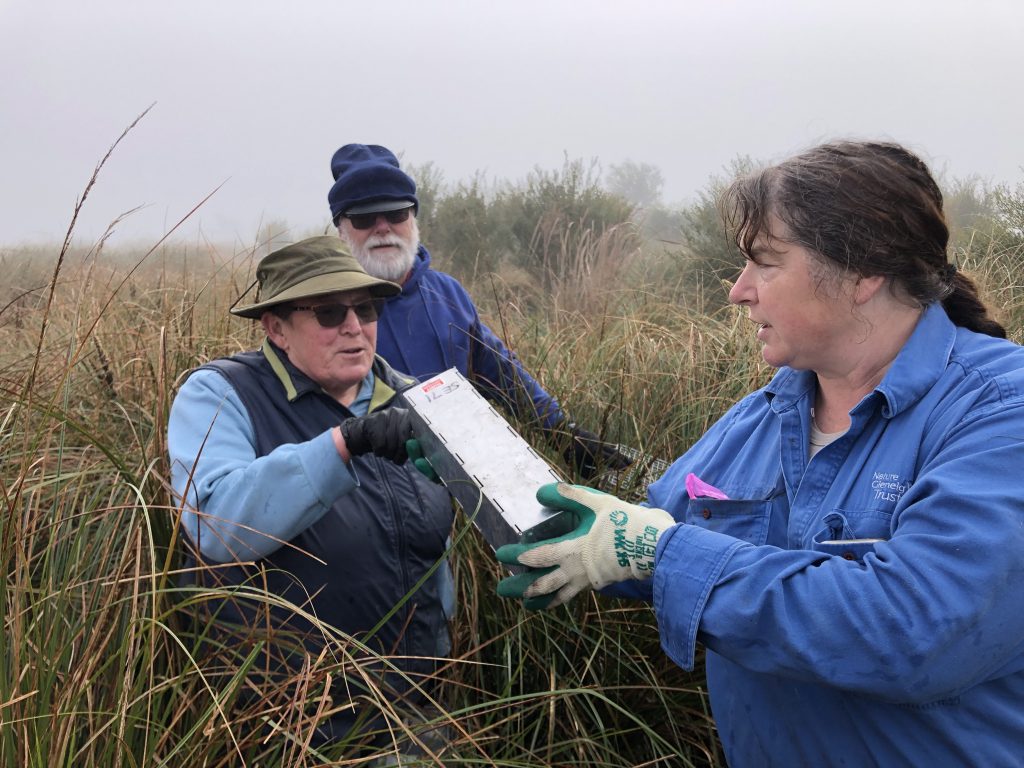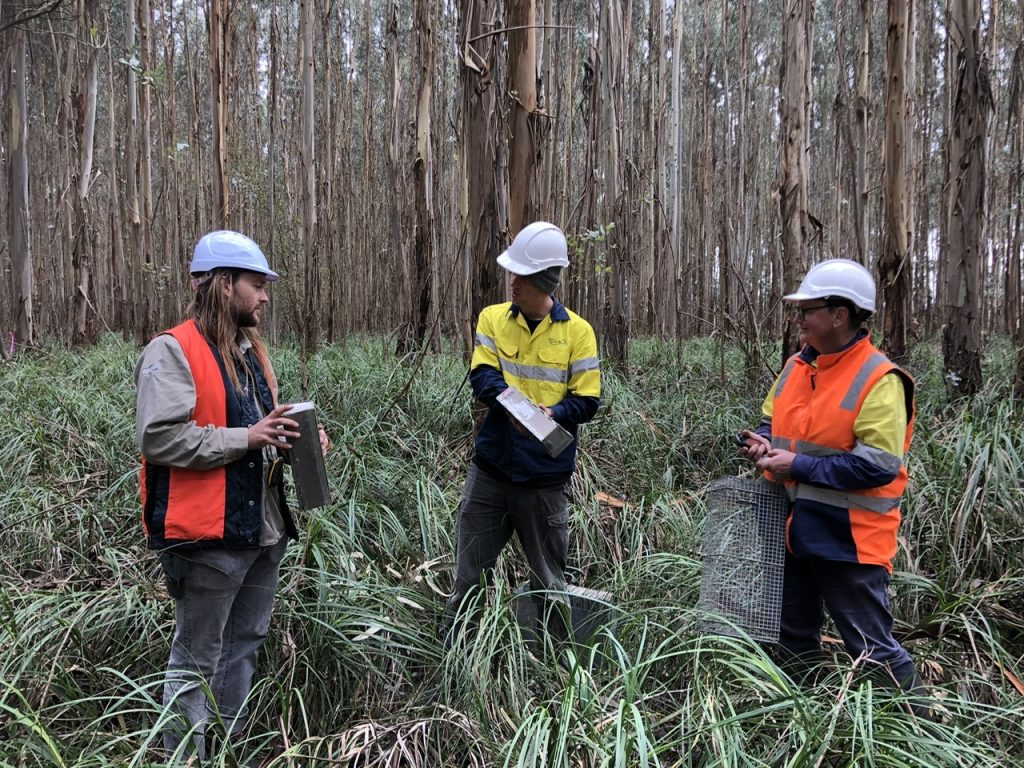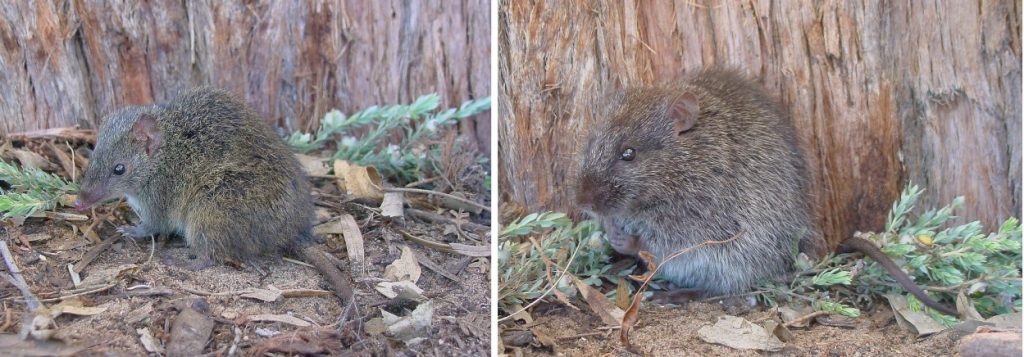Fauna surveys aplenty! – from Wilkin, to Hutt Bay and Mount Burr Swamp
NGT have been contracted (in South East SA and western Vic) to undertake many terrestrial fauna and flora surveys over the autumn-winter-spring-summer period of 2022. In fact, that has been our busiest run for this type of work in the past 10 years!
Needless to say, we are like a ‘duck on a pond’ installing trap lines and sound recorders, making up bait, searching for birdlife, digging in pitfall lines, arranging field workers, volunteers, permits, licences and more. Coordinating all the different projects is not a simple task, but it’s work we really enjoy so well worth the effort. “It’s the best part of the job” says Sheryl Holliday (orchid and spider expert) and field crew leader.
Small mammal surveys began back in autumn with a pre and post-burn investigation for Timberlands near Wilkin (western Victoria). Areas of heathland were re-surveyed for rare mammals like Swamp Antechinus and Heath Mouse to see if they were still present and where they were distributed after a prescribed burn in 2017. The results were very encouraging with Heath Mice caught in all three compartments surveyed. Swamp Antechinus were caught in a long unburnt (refuge) area as well. The following short video summarises the results from the Timberlands survey.
Our second batch of small mammal surveys commenced on our own properties at Hutt Bay and Mount Burr Swamp (in SA) in winter. This baseline survey is helping us to define the ecological values of these properties early in their restoration journey, given the acceleration of wetland restoration works underway as part of the Recharge Farms project. Refer to this link for more information about the Recharge Farms concept.
Remediation works to backfill artificial drains occurred at the Hutt Bay Wetlands reserve in recent months, so water is sitting naturally over some parts of the property where it has not reached for many decades, as shown below.

In areas both within or adjacent to influence of the drainage works (completed at Hutt Bay and coming up at Mount Burr Swamp) we have set up numerous survey sites to capture baseline information for future comparison as these areas recover post-restoration The target for these surveys is vast with our methods aiming to find small mammals, frogs, birds, reptiles and invertebrates. Trap lines were set in all habitat types of both natural, wetland fringes and – at Mount Burr Swamp – even standing or ex-plantation areas that will be converted to conservation.
The small mammal component has so far resulted in five small mammal species being caught, these being Swamp and Bush Rats, Echidna, and the introduced House Mouse and Black Rat. At Hutt Bay we also have the fantastic recent records of the nationally threatened Swamp Antechinus from a survey last year. Swamp Rats were caught in encouraging numbers at both properties. By the way, if you are interested in just how different the Swamp Antechinus (a marsupial) is in appearance from a Swamp Rat, then refer to the photo below.

In terms of birds, the Australasian Bittern has been observed in damper areas at both properties which is a real bonus as hydrological restoration works will further enhance the habitat for this nationally listed species, not to mention a host of other waterbirds. Aside from Bitterns, we have also recorded first-time observations of Lewin’s Rail and Spotless Crake at Hutt Bay and Flame Robin at Mount Burr Swamp.
While the usual suspects are calling, no new frog species have been heard at either property but we hope this will change post-restoration works.
Checking of roofing tile grids and pitfall lines will be next at these properties, scheduled for October and November, so keep an eye out and let us know if you’d like to participate.
I would like to issue a “well done” to the crew for leading these surveys and helping us stay on track during this busy period (especially Dale and Sheryl) and also thank Mark Bachmann for training staff in the best techniques for removing animals from traps, handling and tissue sampling. NGT is very grateful for contribution from the Millicent Field Naturalist Society members who volunteer their time to survey sites for us each year and provide their observations.
Members of the Millicent Field Naturalists Society are thanked for their participation at Mount Burr Swamp.
The activities described above have been supported by Timberlands Pacific Pty Ltd, and the Limestone Coast Landscape Board.



